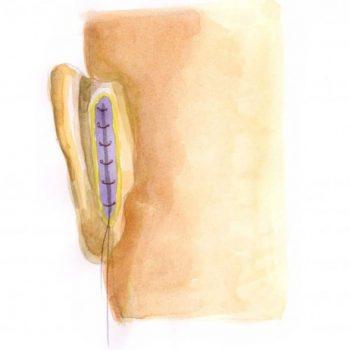Ear surgery

Procedure, Benefits, and Surgical Techniques
Advanced Ear Surgery: Restoring Hearing, Enhancing Lives
The shape of the ears, much like their size, is determined before birth. Children often inherit drooping ears from their parents or grandparents. Drooping can occur due to an underdeveloped or irregular antihelix, or from having execessivly large ears.
OPERATION
Most often it is carried out under local anaesthesia. The skin incision is made behind the ear, usually by removing a strip of the skin. The antihelix fold is formed, softening the cartilage and closing its softened fragment. A large ear (cartilage) is attached with special stitching to the area behind the ear, as well as the ear drooping angle is changed. The skin behind the ear is closed by the “internal” seam, which is removed after 7-8 days.
EAR CARTILAGE SEAM
Recovery Guidelines and Affordable Pricing for Ear Correction Procedures
Post-Operative Care & Pricing for Drooping Ear Surgery
Drooping ear surgery as well as any intervention may have some reaction to the anaesthesia, temporary swelling, a feeling of tension, post-operative pain and bruising. Very rarely, bleeding, wound infection, scar hypertrophy may occur.
POST-OPERATIVE PERIOD
Ears are dressed without covering the face. At home it is advisable to lie on the back with the raised head. The next day, the change of dressing is recommended. Later, the patient wears ear bandage for 7 days. A week later, after removal of sutures, ear dressing is no longer necessary, but it is recommended to put a band on the ears at night for a further 2 weeks.
PRICES
One ear correction from 700 €
Drooping ear correction from 1200 €


